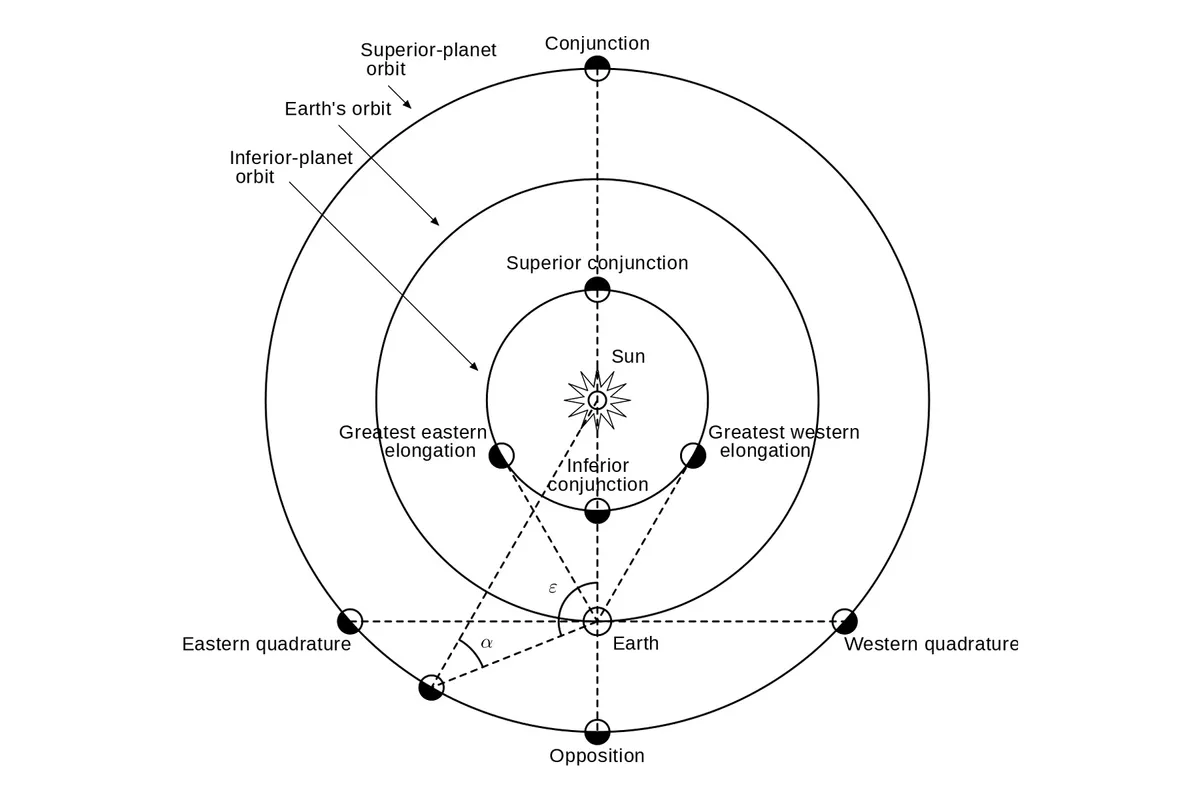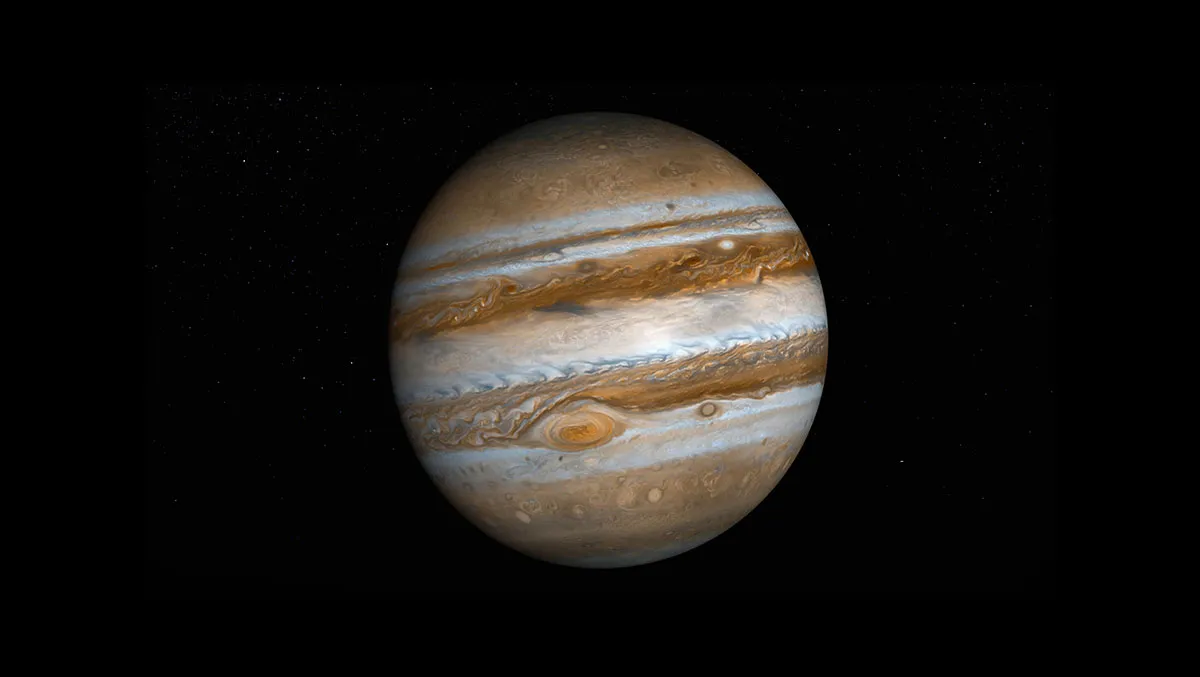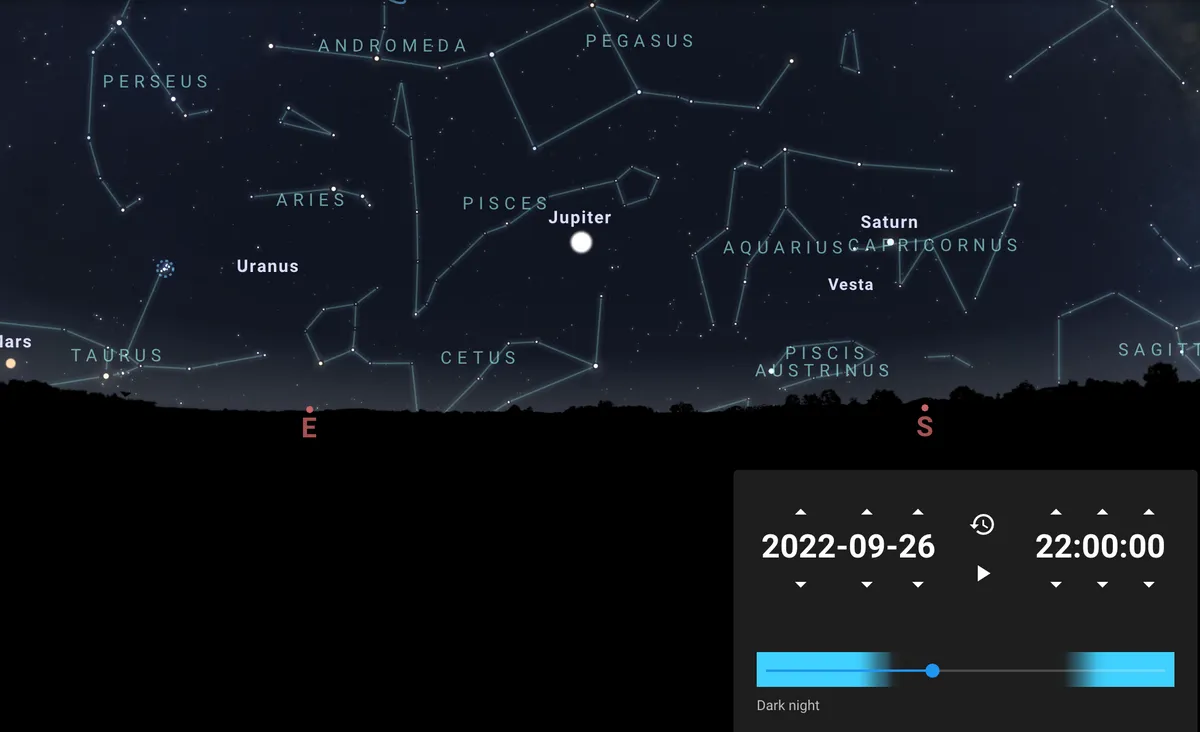As the nights draw in and the Sun begins to set earlier each day, the autumn months can offer excellent stargazing opportunities, without the chill of winter.
Jupiter will go into opposition tonight, 26 September, but what exactly does it mean when we say a planet is in opposition? How can you spot Jupiter in opposition? And, which constellation will Jupiter appear in? Answers to these, and more, are below.
If you’re still able to enjoy the warm weather and (relatively) clear nights, why not make the most of them with our full Moon UK calendarandastronomy for beginners guide? And, in case you missed it, we pulled together the best pictures of theHarvest Moon in 2022.
What is opposition?
Opposition is essentially the planetary equivalent of a full Moon. When a planet is close to the Earth, and on the opposite side of Earth to the Sun, we describe it as that planet being in opposition. The sunlight that shines on the planet is fully reflected, in the same way that sunlight is fully reflected from the Moon every 29.53 days in the lunar cycle. From our perspective here on Earth, the planet appears larger and brighter than at other times of the year.
"When a planet is in opposition, you can see the whole circular disk of that planet, which means we're getting the most light back from the planet to us. So it appears very bright in the sky," says Dr Jonathan Nichols, a reader in planetary auroras at the University of Leicester.
As the outer planets orbit around the Sun, Earth occasionally finds itself between the Sun and another planet, with all three directly aligned. Oppositions can often provide the best opportunity to observe and photograph a particular planet because of its favourable position and brightness.
At Jupiter’s opposition, Earth will lie directly between Jupiter and the Sun, and will remain in the sky above the horizon for most of the night.
Only those planets that are beyond Earth's orbit can be in opposition, these are Mars, Jupiter, Saturn, Uranus and Neptune. Because Mercury and Venus orbit the Sun inside the path of Earth's orbit, they can never be in opposition.

When is Jupiter in opposition?
Jupiter will reach opposition tonight on Monday 26 September 2022, when it will be at its closest and brightest for the year, essentially creating a 'full' Jupiter. The king of the Solar System will rise as sunset falls, at 6:52pm on Monday 26 September and will remain above the horizon until it sets at 6:57am on Tuesday 27 September 2022, as viewed from London (times will vary with location).
Weather permitting, we are expected to be offered perfect visibility of Jupiter.
What's so special this year?
This year, Jupiter goes into opposition at the same time the massive planet reaches its closest approach to Earth, as it travels in its own orbit around the Sun. And, it's the closest approach to Earth for 59 years. The reason for this is down to the shape of the orbits. As they're not perfect circles, Earth and Jupiter will pass each other at different distances throughout the year. When Jupiter reaches opposition, the gas giant will be situated a mere 591.3 million kilometres (3.95 AU) from Earth. At the furthest point away from Earth in its orbit around the Sun, Jupiter is around 966 million kilometres distant.
And, with a new Moon only the night before, viewing conditions looks set to be excellent. Fingers crossed for clear skies...
What will you be able to see?
For naked-eye observers, Jupiter will appear as a very bright point of light that, unlike stars, does not twinkle. A decent set of binoculars (7× to 10x magnification) will provide you with a view of Jupiter’s four largest moons, Ganymede, Europa, Callisto and Io, and a telescope will allow you to view Jupiter’s stripes.
"Point at pair of binoculars up at Jupiter and you'll be able to see four pinpricks of light surrounding Jupiter. Those are the four largest Galilean moons. They are called 'Galilean moons' after Galileo, who was the first person to discover these objects," Nichols explains.
"It's fun to look at Jupiter over a few days and see these points of light changing position."
"Io, the innermost Galilean moon, is orbiting really quickly and zips around Jupiter, changing position very quickly, whereas the other moons move slower. Now, obviously, from our viewpoint, the pinprick of light closest to Jupiter isn't necessarily Io. But the way to determine that is by either looking on an app or see which one is moving quick, quickest."
"[Imaging a planet when it's in opposition means] you'll get a better resolution on the planet, as well as collecting as many photons as you're going to collect. It gives you a nice big, very highly resolved image of the planet," Nichols says.

Jupiter's bands, the Great Red Spot and even clouds can be seen through a telescope. Jupiter has a fast spin, and eagle eyes may even be able to spot the resulting slightly squashed appearance of its bright disc.
From around 6:52pm on Monday 26 September, Jupiter will rise in the eastern sky, in the constellation Pisces. As night progresses, the planet will travel east and reach its highest in the middle of the night before setting at sunrise, disappearing below the horizon at 6:57am the next day.
If you're interested in astrophotography or creating an animation of Jupiter, expert Pete Lawrence has put together this handy guide on how to make a planetary animation.
How can I spot Jupiter in the night sky?
Jupiter is one of the brightest objects in the night sky, which makes it relatively easy to spot, even without a telescope. If you're struggling with orientation, then there are astronomy apps that you can download - all you need to do is point your phone at the sky and the app will tell you what's what.
For those of you who prefer star hopping, look towards the southeast after sunset. Jupiter will rise in the constellation Pisces, which can be seen anywhere in the world, with the exception of Antarctica. Although Pisces is a large constellation, its stars are relatively dim. However, its distinctive V-shape is one of the largest star formations in the sky.
You can find Pisces by first locating the Summer Triangle, and tracing an imaginary line from the bright star Vega and splitting the triangle perpendicular to the base, which is made up of Altair and Deneb. This line points to the head of the western fish in Pisces. Jupiter will be sitting just below the western fish.

How often do oppositions occur?
Each of the planets go into opposition on a roughly annual basis. This is because Earth has a faster orbit, passing between these planets and the Sun. The exception is Mars, which is around every 26 months due to it being relatively close to Earth in the Solar System. Jupiter goes into opposition every 13 months.
Jupiter's 12-year cycle
Jupiter lies within the zodiac band of the sky, and it moves through approximately 1/12 of its orbit every year (a single orbit being around 12 years).
In other words, it takes around 12 months for Jupiter to cross one of the zodiac constellations and move on to the next. This means that Jupiter goes into opposition every 13 months, and the planet will pass through all of the zodiac constellations over a period of 12 years.
Like the other planets, Jupiter travels from west to east across the night sky, against a backdrop of stars and distant galaxies. However, when it's in opposition, the planet also enters into a period of apparent retrograde motion, when it appears to move backwards for a time.
Here are the constellations that Jupiter will appear in over the next 12-year cycle:
- 26 September 2022: Pisces
- 1 November 2023: Aries
- 6 December 2024: Taurus
- 9 January 2026: Gemini
- 10 February 2027: Leo
- 13 March 2028: Virgo
- 13 April 2029: Virgo
- 14 May 2030: Libra
- 16 June 2031: Ophiuchus
- 20 July 2032: Sagittarius
- 25 August 2033: Aquarius
- 2 October 2034: Back in Pisces
About our expert, Dr Jonathan Nichols
Dr Jonathan Nichols is an associate professor at the University of Leicester. His research includes studying Jupiter's aurorae using the Hubble Space Telescope data combined with interplanetary spacecraft data.